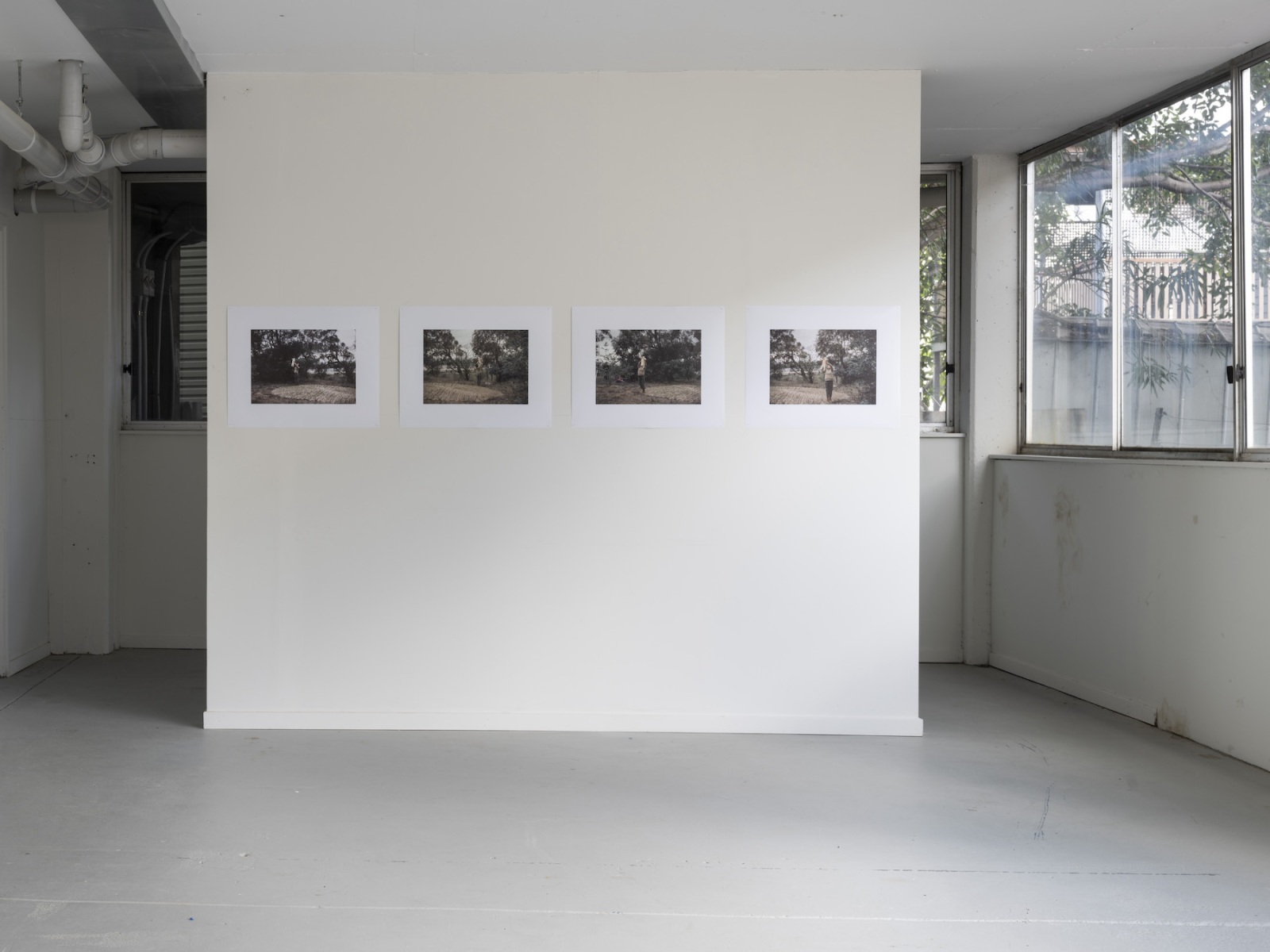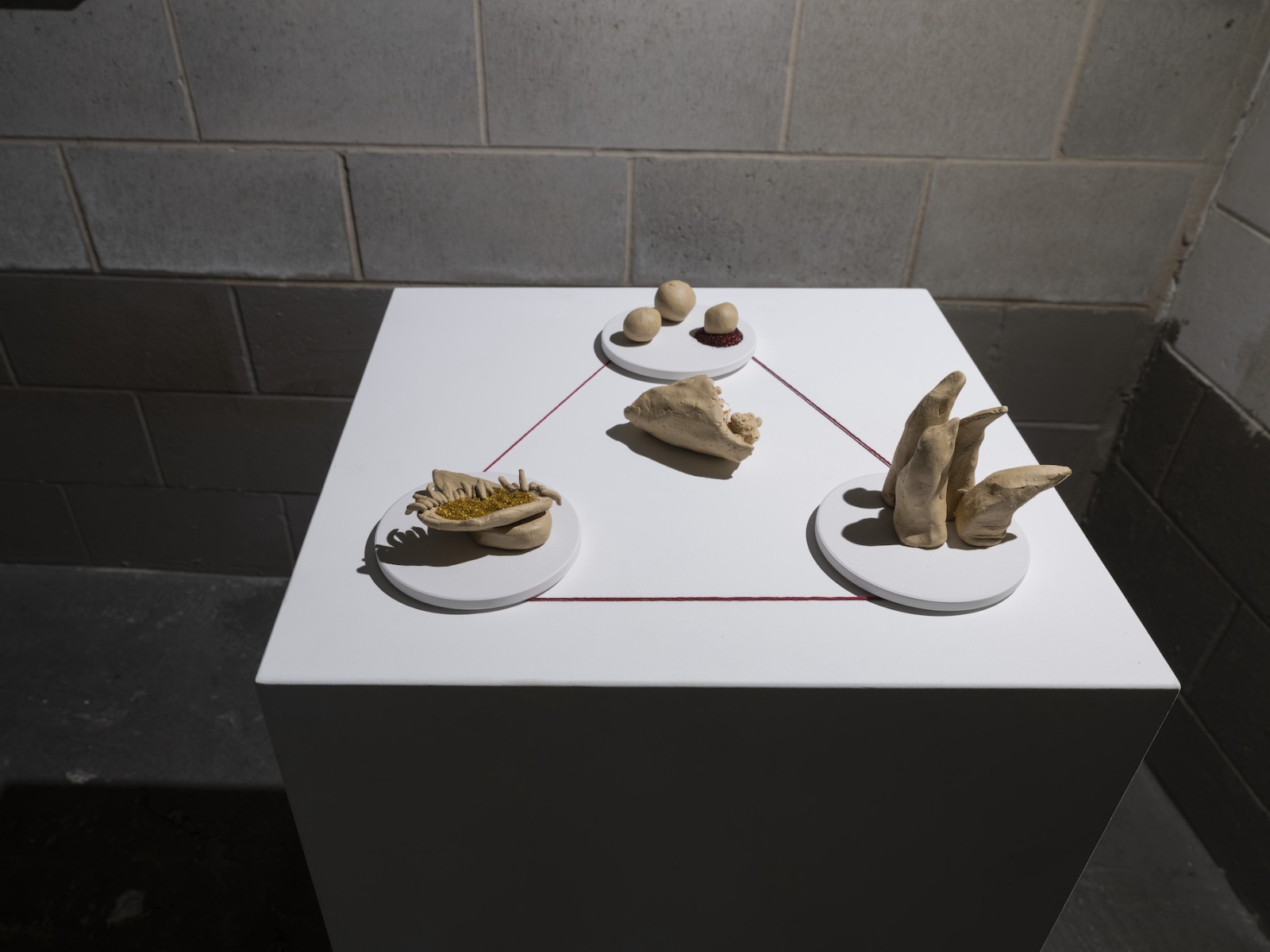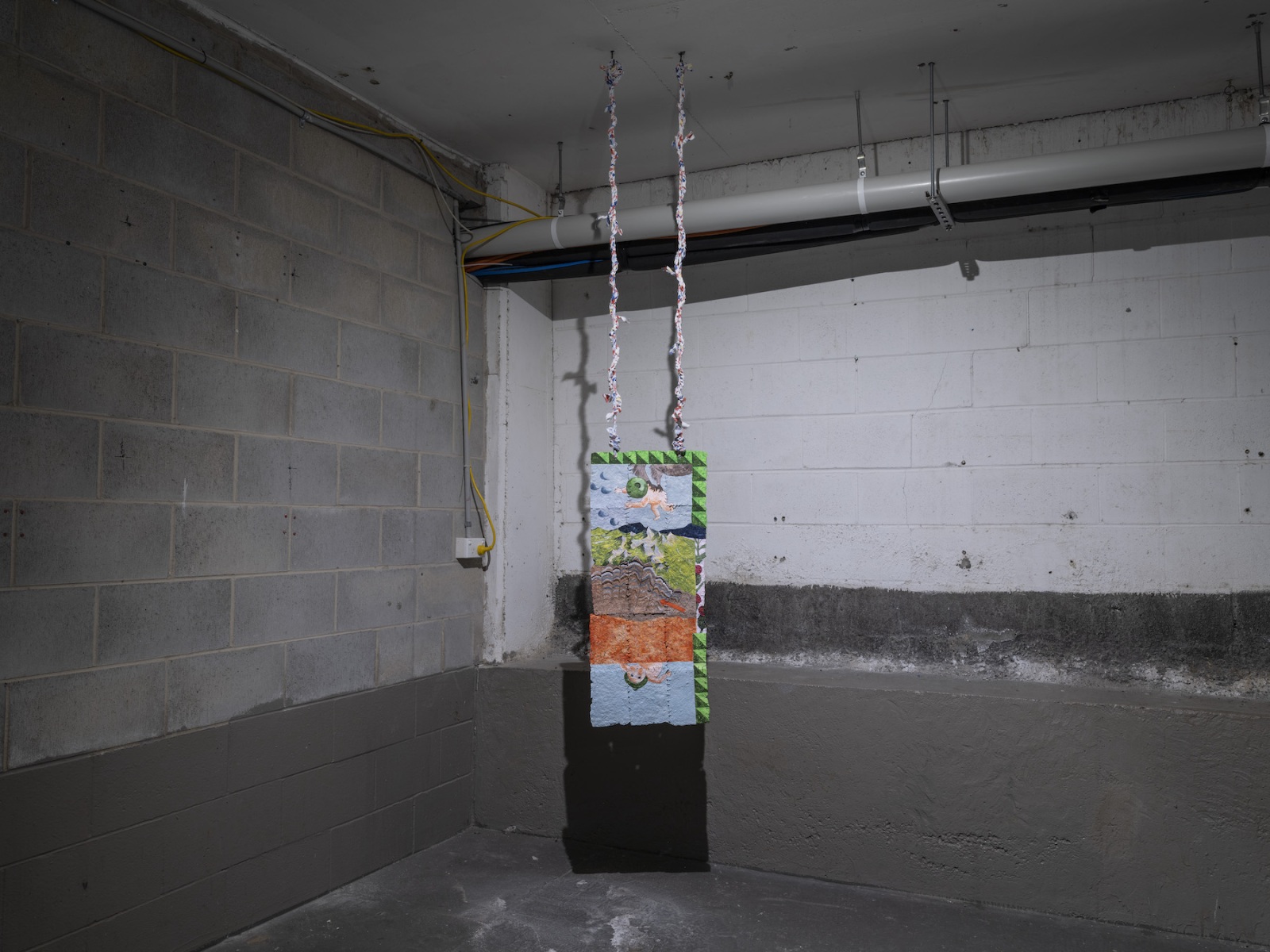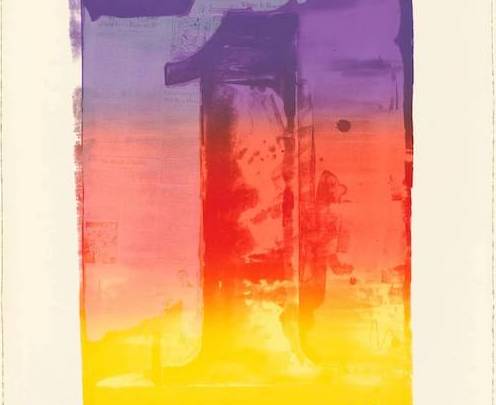I recently read an essay by artists Nina Ross, Lizzy Sampson, and Jessie Scott in Care Ethics and Art (2022), which discusses some of the difficulties of maintaining a professional art practice after having children. One of their many frustrations revolved around the difficulty of attending exhibition openings, which are generally held at the witching hour and impossible to navigate with a pram. They write: “When we could get along, we found ourselves changing babies on the floor of the toilet, leaving early to find a space to feed children, or feeling unable to ‘network’ due to our recent lack of participation in the arts scene.”[i] This was not the case at the opening of An Offering, which was busy with babies, children, and adults alike.
The exhibition is curated by Amy-Clare McCarthy and features work by Naomi Blacklock, Elisa Jane Carmichael, Bonita Ely, Chantal Fraser, Sally Molloy, and Elizabeth Willing. It was motivated by McCarthy’s own experience of motherhood, when, after having her second baby, she was left wondering how to find space for ‘paid work’ outside of the full-time job that is parenting. Ely’s performance, A Mother Shows Her Daughter to the Universe(1982), inspired the idea that motherhood can’t be separated from work, but instead entangles and overlaps with all facets of a life.
And so on a Saturday afternoon, at a respectable 4pm, I entered the underground, Besser block gallery of Milani’s carpark with my own baby in tow.
In the first room, I came across Willing’s linen hangings. One has stitched shapes taken from baking cookbooks, demonstrating how to best cut cakes in order to achieve elaborate shapes. Immediately I thought of my own mother, preparing cakes from the famous Australian Women’s Weekly Children’s Birthday Cake Book (1980). This nostalgic memory contrasted with Willing’s brightly coloured pink, green, and blue pigments, extracted from medication belonging to her father. In this work, the artist hints at the psychological complexities of motherhood by introducing themes of aging to motifs from childhood, highlighting the finite and cyclical nature of life.
The next room features Blacklock’s multimedia Ritual for Aruna (2023). A mandala made of soil is positioned on one side of the room and a film projects onto the wall. Blacklock’s performance appropriates and recontextualises A Mother Shows Her Daughter to the Universe via the artist’s own maternal experience, introducing ritualised objects such as clay pots with burning incense. The dark and enclosed environment of the underground carpark accentuates the sensory qualities of this work: the earthy scent of the soil, the sound of recorded noise, and the light from the projection.
In the back room, Molloy’s Echoes of Invasions (Babies Falling, Mountains Forming) (2023), suspends from the ceiling. The artist has fabricated a rectangular substrate using reconstituted kitty litter, cloth nappy, weeds, dog hair, lint, and old sheets. Painted on the surface is a vibrant scene of blue skies, cherub babies, and maintain ranges. Identifying the gumnut baby motif from the May Gibbs’ children’s books is key to interpreting this work. Gibbs’ gumnut stories formed part of Australia’s national imagery during the early 20th century, reimagining the bush as home for early settlers and ‘indigenising’ them as white gumnut babies.[ii] Via this inclusion, Molloy draws attention to how children unknowingly bring colonial imagery into domestic space.
Diagonally across from Molloy’s painting is Fraser’s sculptural work, Altar Lua (2023). The series of clay objects gave the artist power during the arrival of her second child. Their forms feel yonic-like. I can’t help but try to identify parts of the reproductive system within their shapes: an egg, an ovary, a fimbriae? The objects are placed on a plinth, giving them gravitas. By doing so, Fraser also grants significance to all phases of the reproductive system.
Ely and Carmichael’s works sit together in a separate room. Pieces of Home (2023), features a spiral installation of short pieces of driftwood, collected from Minjerribah (North Stradbroke Island) by the artist and her son, Ira. Each piece of wood has been attentively cared for: cleaned, coloured with ochre, tied with shells and ungaire (freshwater swamp reed), and carefully placed within the installation. The unseen process of collecting the driftwood is the more significant part of the work, being one of Ira’s formative experiences of connecting with Country.
At this point my squirmy, unsettled, and soiled baby is whisked away by my partner, and I finally look at A Mother Shows Her Daughter to the Universe, the catalyst for the show. In photographs of the performance, we see Ely introducing her daughter to the world, dipping her down to meet the earth and rising her to greet the sky. The ritual takes place outside religion, emphasising a child’s sacred relationship with nature. It gestures to an interconnectedness that McCarthy’s exhibition expands upon.
The beauty of An Offering is the space that McCarthy has given to each of the artists, enabling them to showcase their personal experiences of motherhood. The messy and inseparable nature of motherhood, art, and labour was evident in both the exhibition and also the exhibition opening, which was enthusiastically supported by attendees, big and small.
[i] Nina Ross, Lizzy Sampson, and Jessie Scott, “Soiling the white cube: Artist parent experiences,” in Care Ethics and Art (Oxfordshire: Routledge, 2022), 71.
[ii] Joanne Faulkner, “Gumnuts in the garden of good and evil: racialization and fetishism in May Gibbs’sSnugglepot and Cuddlepie,” Journal of Media & Cultural Studies 35, no. 6 (October 2021): 955-971.
Thoughts from Gabrielle Bergman, emerging arts worker, writer and curator. @gabriellebergman










